Our first encounter with the Huracán STO was but a teaser, just an hour’s worth of driving time on packed suburban roads. It was a brief glimpse into the most hardcore road-going Huracán to ever be produced. But Lamborghini was kind enough to lend us another one so that we could truly experience this homologated street special and over the course of 600 km, that’s exactly what we did.

STO stands for Super Trofeo Omologata, and it’s essentially a street-legal version of Lamborghini’s Super Trofeo race car, replete with a functioning hood scoop, gigantic rear wing, an abundance of vents and negative spaces, and of course, a scintillating exhaust note. There’s absolutely nothing understated about the STO (or any Lamborghini for that matter). In fact, 75% of the STO’s exterior bodywork is now made from carbon fibre, including the front hood, fenders, and bumper, which are all one single piece, though hidden underneath this matte shade of Rosso Pyra.
Over the standard Huracán, the STO receives upgraded Brembo carbon ceramic brakes, magnesium rims for lower unsprung weight, a 20% lighter windscreen, and the choice between a road-spec and a track-spec Bridgestone Potenza tire. Lamborghini also widened the wheel track, stiffened up the suspension, added rear-wheel steering, as well as an adjustable rear wing with three levels of downforce. All it requires is a standard screwdriver, so you don’t need special mechanics to fly out from Italy to help you out. Ours was set to Medio, or medium downforce, which works in tandem with the sizable rear diffuser and active front splitter that keep the Huracán glued to the tarmac.
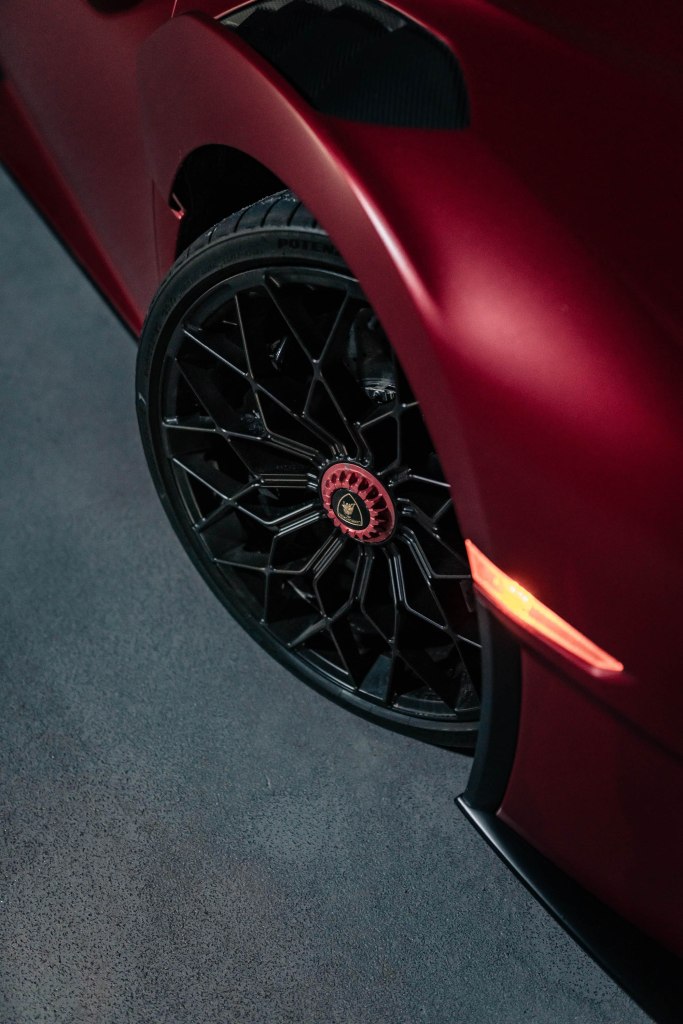
And if all that aero wasn’t enough, Lamborghini even went so far as to install a roof scoop. Harking back to the days of the McLaren F1 GTR, it not only looks sensational but it serves an integral purpose to improve engine cooling. In all, Lamborghini says the STO produces 53% more downforce than the Performante, and is 43 kg lighter overall.
That said, the STO is not a particularly complex vehicle, certainly not in the same light as the hybrid Ferrari 296 GTB or the McLaren Artura. It uses the same basic building blocks from the Huracán Performante and builds on that equation, amplifying it in every mathematical way possible. That means the naturally aspirated 5.2-litre V10 continues to produce 640 hp but with slightly less torque at 417 lb-ft, all fed through a 7-speed dual-clutch automatic transmission. Like the Huracán EVO RWD we recently tested, the STO is also rear-wheel drive only, though 0-100 km/h still comes in an unbelievably quick 3.0 seconds. Top speed? 310 km/h.

So what’s it like to drive and live with the STO on a daily basis, on regular roads, and over the course of 600 kilometres? It’s as expected: the performance is as theatrical as it is physical. The STO is a refined yet rough instrument, beaten down with years of motorsport experience. Those that want a more street-oriented mode of theatrical transportation will want to wait for the upcoming Huracán Tecnica, which is like an STO Touring if you will.
That’s because the ride in the STO, even in the softest setting, is overtly firm and immensely rigid, juggling you around in those heavily bolstered seats while the suspension negotiates the beaten path, ebbing and breathing with the pockmarked road just millimetres below you.

It truly is a race car for the street, and whenever someone hops in a race car for the first time, aside from the taxing ride, the thing they always notice is the brakes, and the amazing stopping force that follows. The same goes for the STO. The carbon ceramics carry so much bite that even the slightest press has you violently lunging forward – it’s a great way to get your passenger to admire all the expensive Alcantara liberally lathered over the dashboard. Brake even harder so they can ogle at your $5,000 carbon fibre floor mats. But unlike McLaren brake pedals that require Herculean effort, the STO’s is relatively easy and forgiving to modulate.

We would be lying if we said we noticed the extra aero bits and downforce while being a law abiding citizen, but we truly do feel, even at low speeds, is the extraterrestrial grip of the new Bridgestone Potenza tires. They keep the STO glued to the tarmac like white on rice, and the only way to really break traction is to intentionally provoke it mid-corner with a generous stab of the throttle, promoting moments of grin-worthy power oversteer. There’s a gentle air to the STO that forgives mistakes yet begs to be driven on the edge, unlike earlier Lamborghinis like the Diablo and Murcielago. And similar to every other Huracán, the traction and stability control systems seem to err on the side of caution, even in their sportiest settings, constantly cutting off power the moment you fling its tail around, but that should actually help the majority of drivers exploit the prodigious powertrain without the fear of careening themselves into the nearest tree.
Because the V10 engine is the Huracán’s gravity, and there’s a sense of occasion every time you uncork its atmospheric 8,500 rpm redline, giving you every reason in the book to explore there. The engine is constantly hungry for revs, and its appetite appears insatiable – though the opposite could be said for our wallets. The noise that follows is biblical – every decibel is worth every penny as the V10 fires off a military-grade (and military price) barrage of artillery fire to every eardrum within a five-kilometre radius. You will hear the STO coming before you see it, but you won’t have to wait long with the STO’s 0-100 km/h time of 3.0 seconds. The propulsive force hits hard in the stomach, rough in the eardrums, and it enjoys rearranging your organs on full boil. “How is this even street-legal?” we tended to ask ourselves everytime we lit up the bonfire with our right foot.
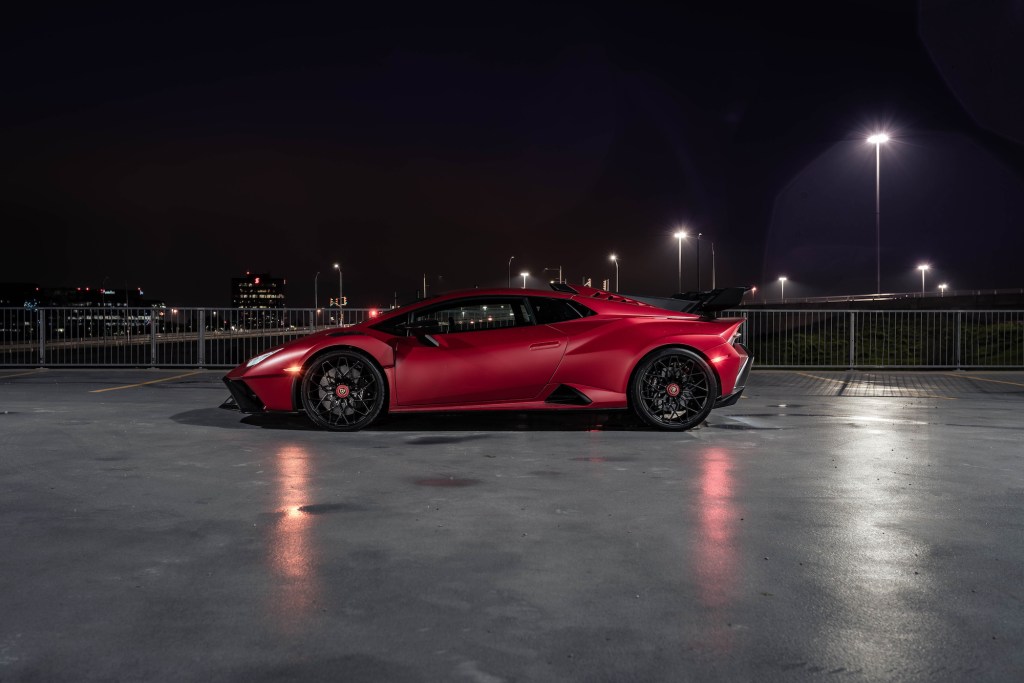
The STO uses a similar exhaust to the Performante with titanium intake valves, and while it doesn’t sound much louder or more unique for that matter, there are definitely more physical vibrations from the engine and a slightly more pronounced staccato when cresting the limiter. Listen hard and you can even hear a bit of the wind slicing into the roof scoop and into the engine bay. The exhaust valves only open up when you stroll past 3,500 – 4,000 rpm as well – a good thing when you don’t want to fit supercar driver stereotypes when cruising around town.
Driven hard and the STO rewards the driver with sharp steering that’s rich in road detail, yet it’s still light enough to just steer with just one hand. The tires won’t tramline every single groove on the road to the point of driver exhaustion, and the gearbox doesn’t mind low-speed creeps in traffic either, adding to its daily usability with a fantastically fluid and light-footed experience.

How does the STO feel over the Performante? Not very different, on the road at least. We can’t feel the nuances and upgrades in performance when we’re just dwindling down some excuse of a twisty road at 80 km/h. It grips with authority, no matter how hard we push it around a hot corner, but there’s a limit to how much we can safely (and legally) extract and understand the limits of the STO on road reviews like this. We’re certain that the STO will shine brilliantly on the track, but we don’t need one to fully enjoy it. That’s the brilliance of this homologated special. It boils down all the essentials into a digestible feast for the senses. No matter your driver skill level, you can easily appreciate the depth of the STO’s capabilities, even on everyday roads.
Onto the practicality of the STO, which is essentially non-existent. Over the regular Huracáns, there are a few notable things to mention should you contemplant purchasing an STO. There are no cupholders. Your Timmies will have to be straddled between your thighs, while you pray that potholes don’t hinder your chance of procreation. You also best pack lightly, as there are no door pockets, just a small passenger-side glovebox, a little tray at your elbows to keep your phone from flying about, and a cubby behind the touchscreen unit. Oh, and there’s a tiny storage box under the front hood, but you have to use a key to unlock both sides of the car and carefully lift it up to access it. Not ideal when your hands are holding groceries.

Front visibility is decent thanks to its low hood and somewhat thin A-pillars, but it’s not as good as the McLaren 720S, and the blind spots here are atrocious. There’s really no use for the rear view mirror, as all you can see is the slotted engine cover. So you can essentially make out that there’s a vehicle behind you, but not what vehicle or how close it is. We ended up using the side mirrors as a replacement, swerving to the side to get a better view out back. Constantly scrambling around for the front nose lift button will become habitual, and your neighbours will despise your choice of transport every time you light up the V10. The sport seats are supportive in all the right areas for hard driving, but it lacks proper back and lumbar cushioning for those longer journeys. These are but the small pea problems that are easily forgiven when the STO is simply the second, third, or even fourth car in the stable.

The Huracán STO provides layer upon layer of driving engagement and enjoyment, and just when you thought you had enough driving for the day, this raging bull goads you on to keep turning expensive gasoline into naughty fumes. It’s a good thing that Lamborghini gave us a mileage limit, or else our moral compass when it comes to carbon emissions would be heavily skewed.

We know that the days of the naturally aspirated V10 are numbered, as are the V12s underpinning the Aventadors. which only has us cherishing these last fleeting moments even more. The STO isn’t just a swan song for large displacement engines, but also a demonstration of the pinnacle of automotive engineering, and how far we can take road-legal homologation specials. You never know you’re living in the golden age until it’s come and gone, but we’re certain that it’s now.
Specifications:
Model: 2021 Lamborghini Huracán STO
Paint Type: Rosso Pyra
Base Price: $394,217
Price as Tested: $477,647
Wheelbase(mm): 2,620
Length/Width/Height (mm): 4,547 / 1,945 / 1,220
Dry weight (kg): 1,339
Engine: 5.2-litre V10
Horsepower: 640 hp @ 8,000 rpm
Torque: 417 lb-ft @ 6,500 rpm
Transmission: 7-speed dual-clutch
Engine & Drive Configuration: Mid engine, RWD
Tires: Bridgestone Potenza; 245/40R20 front 305/30R20 rear






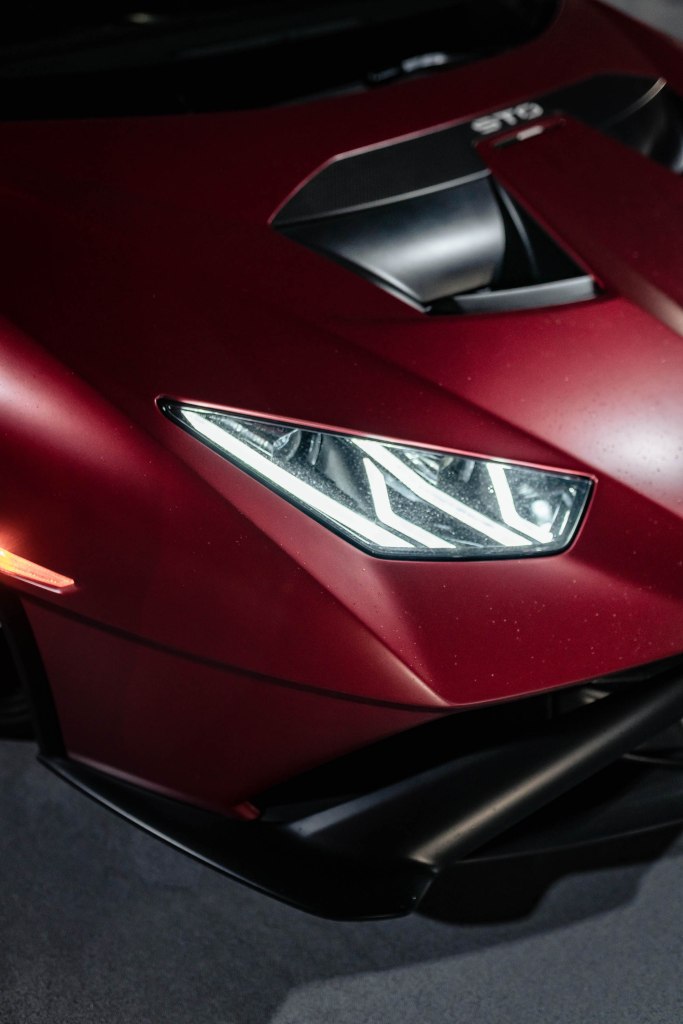









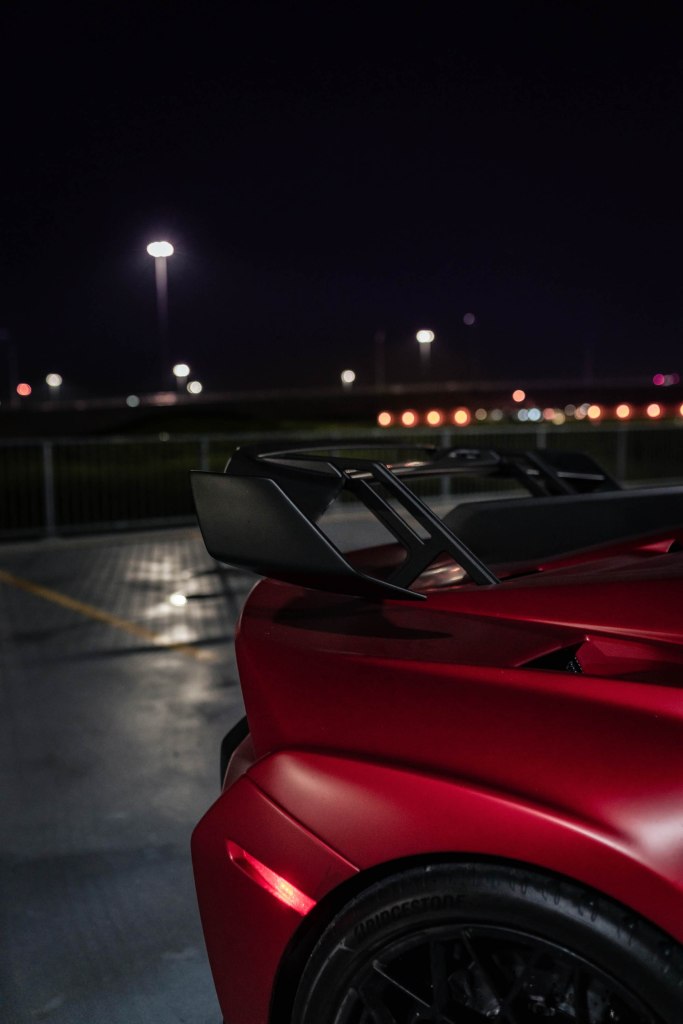


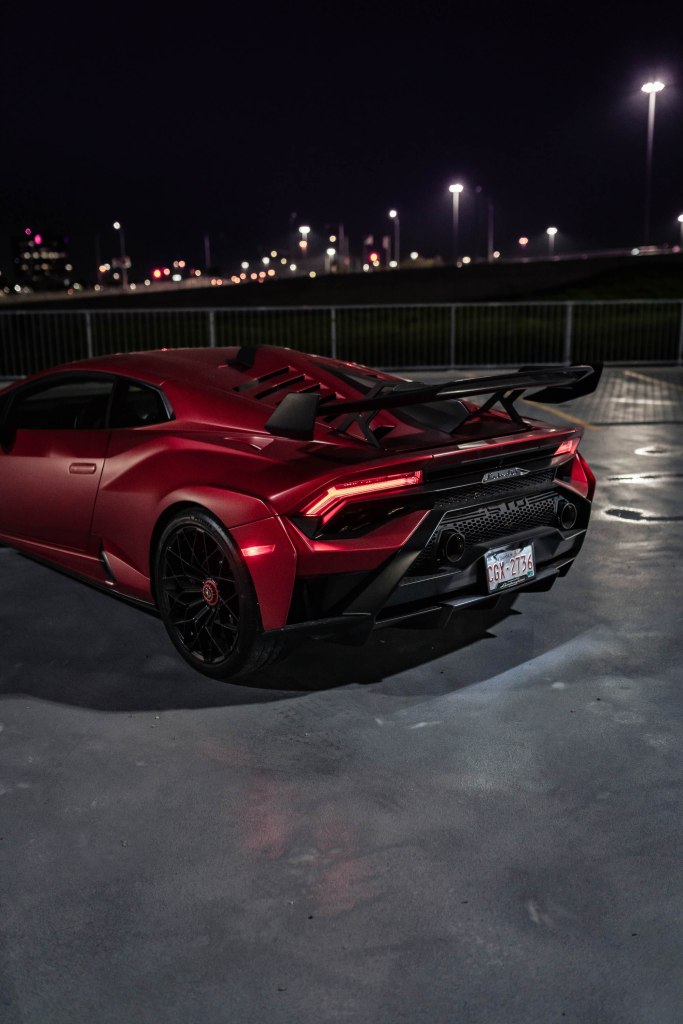

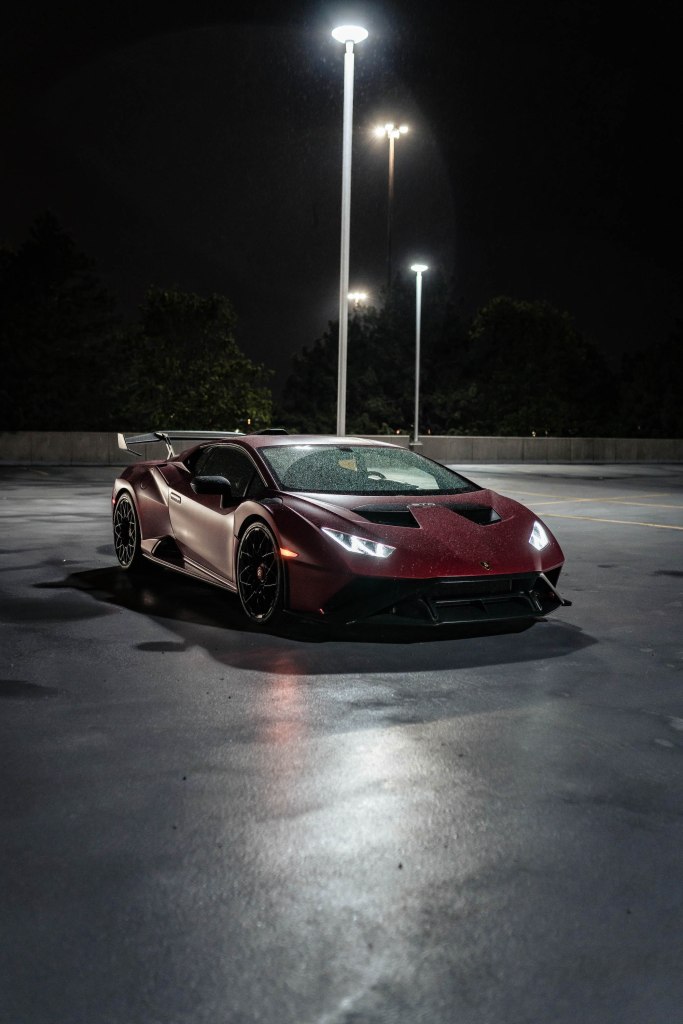
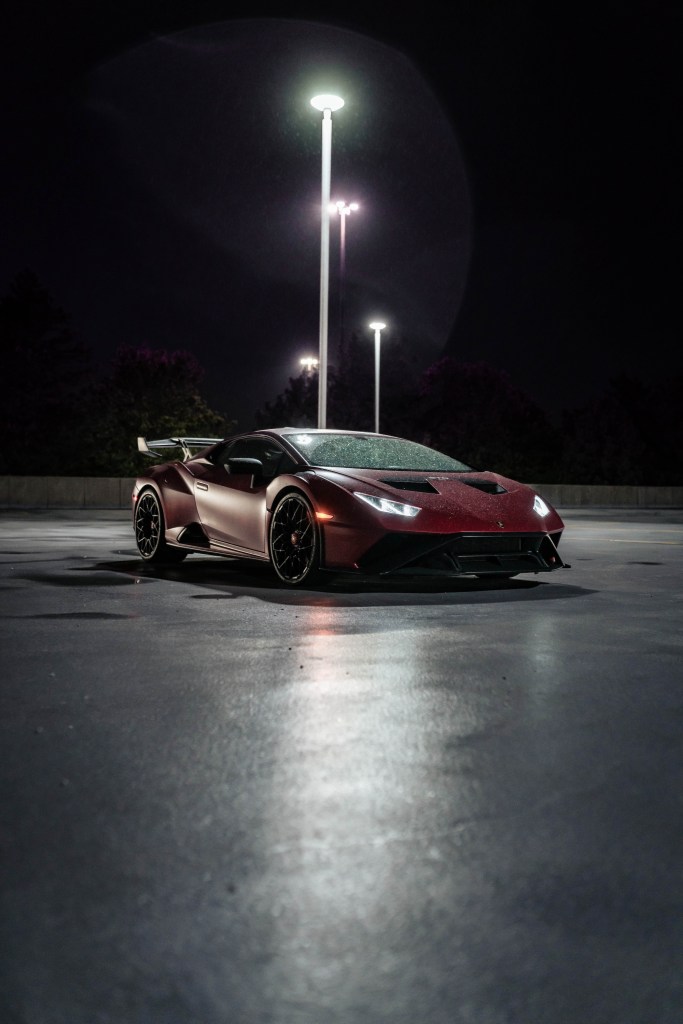











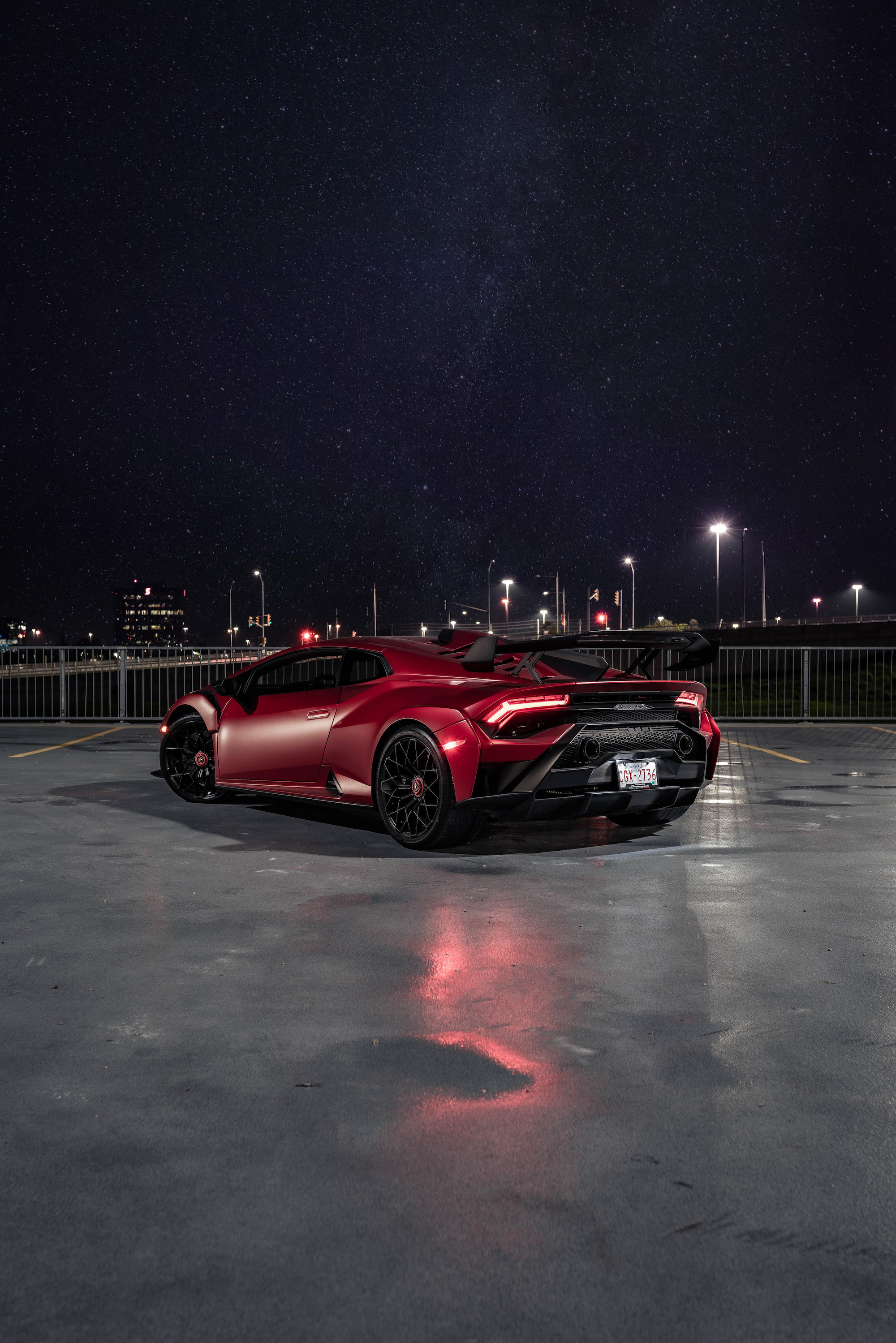


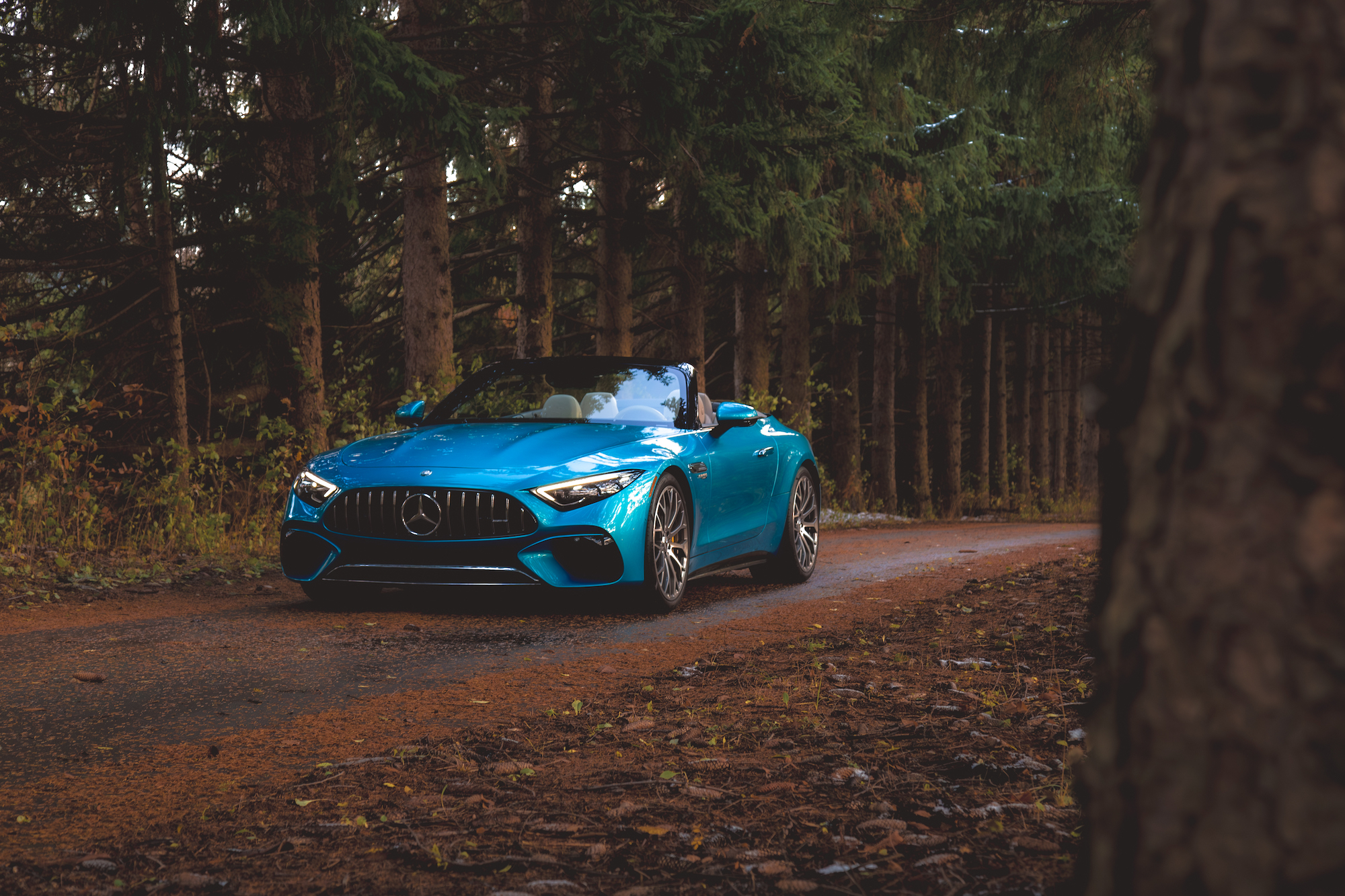

Leave a Reply